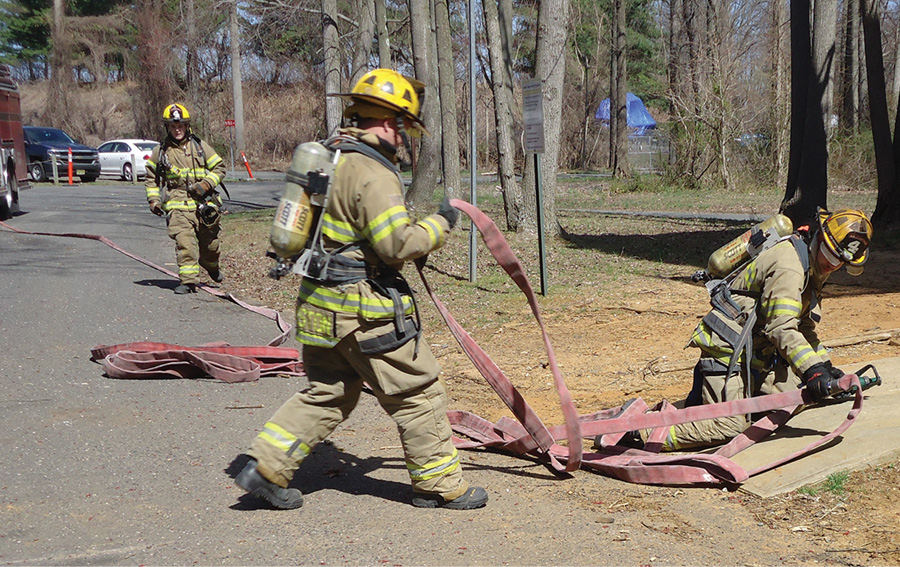
BY JACK HUESTON
After you have stretched the hose from the apparatus and before you can charge the hoseline and advance it into the involved structure at a fire, you must properly and neatly stage the hoseline outside the entry point, also known as “flaking the hose.” Properly flaking the hoseline is one of the most important tasks engine company members perform during the initial fire attack.
Although routine, the hose flake is often improperly performed on the fireground, which stalls the hose’s advance. The resulting sloppy pile of hose in the front yard will result in numerous kinks and reduced nozzle flow. Photo 1 shows an improper and sloppy initial attack hoseline flake at a structure fire.
Two to three firefighters should be able to stretch a 200-foot preconnected attack line and flake two working lengths at the entry point in about one minute. Getting the hose off the engine and properly flaked at the entry point necessitates a practiced plan and coordination among the engine crew.
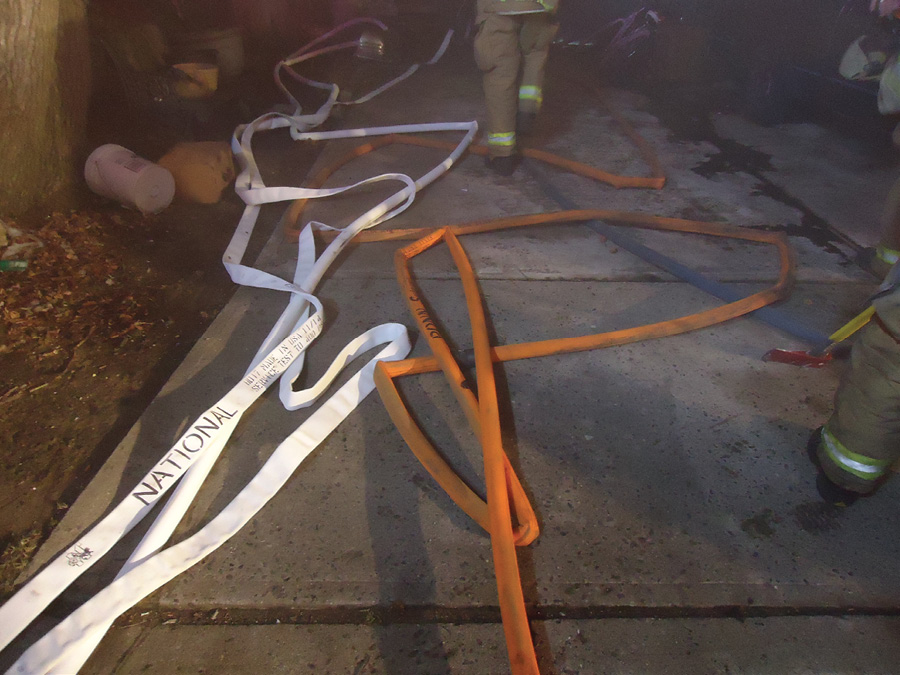
(1) Photos by author.
The Plan
The plan demonstrated below uses a three-member engine crew performing a horizontal stretch from a preconnected hosebed. The basic procedures can be altered to accommodate any size crew.
The engine apparatus should stop just short of or past the fire building to leave the front of the building open for the ladder company. On exiting the apparatus, the nozzle firefighter takes the nozzle and three to four folds of hose from the crosslay compartment, neatly loading the hose bundle on his shoulder. He steps about 10 feet away from the apparatus and waits for the backup firefighter to load his hose bundle (photo 2).
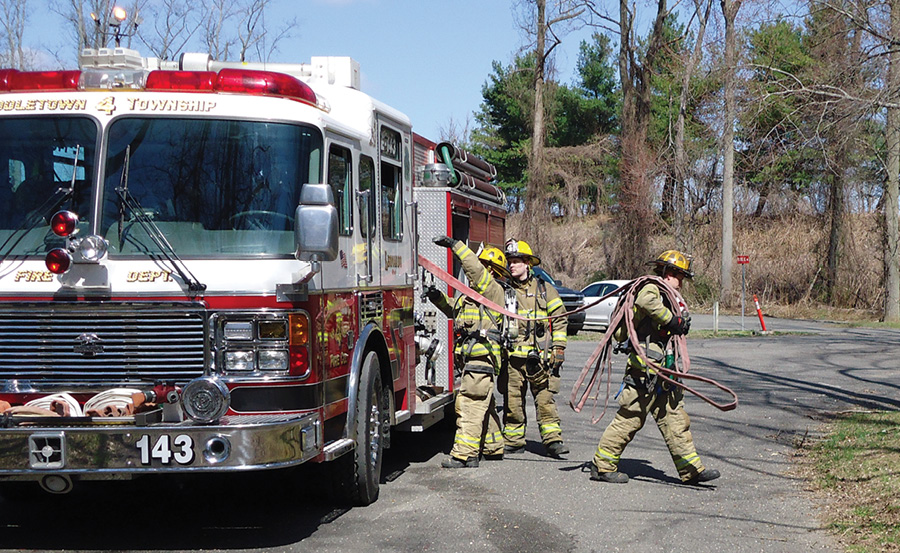
(2)
Another option for loading the hose on the firefighter’s shoulders is to drape the hose bundle over the forearm. Considering the height of most modern fire apparatus, shoulder-loading the hose bundle is far more practical. Also, when using a forearm carry, more hose has a tendency to drag on the ground and the couplings can snag under the tires of parked cars, signposts, and fence gates.
The backup firefighter takes the next three to four folds from the crosslay compartment and places that bundle on his shoulder. If you are stretching from a crosslay hose compartment, three to four folds will give you approximately 50 feet of fire hose. The backup firefighter steps away from the apparatus. Together, the nozzle firefighter and the backup firefighter (the nozzle team) proceed toward the entry point of the fire building (photo 3).
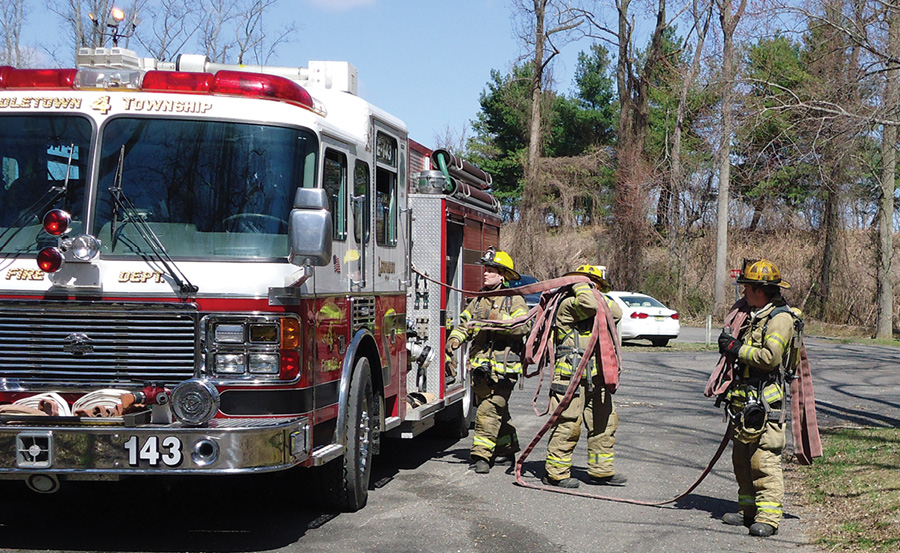
(3)
The door/control firefighter takes a stationary position at the hosebed. This member clears the remaining hose by passing it hand to hand in a conveyor belt fashion toward the advancing nozzle team (photo 4).
On reaching the entry point, the nozzle firefighter drops his hose bundle about 10 feet from the entry door. This distance will leave room for the inside truck crew to work at the door if forcible entry is needed. The nozzle firefighter’s position is now stationary for the flake. The nozzle firefighter holds the nozzle and the first coupling in his hands.
The backup firefighter drops his hose bundle just short of the nozzle firefighter’s position and flakes out the nozzle firefighter’s length. This flake should be perpendicular to the entry door whenever possible. This eliminates one bend and pinch point during the advance. If the available space doesn’t allow for a perpendicular flake, the hose can be flaked parallel to the front of the fire building (photo 5).
Once the nozzle length is flaked, the backup firefighter locates the next coupling in his hose bundle and hands it to the nozzle firefighter. The nozzle firefighter holds both sets of couplings while the backup firefighter flakes out the second length alongside the first. By this time, the door/control firefighter should have moved forward and can help the backup firefighter complete the flake. Remember that the nozzle firefighter’s position is stationary; he is just securing the nozzle and couplings so they do not accidentally get dragged out of position during the flake (photo 6).
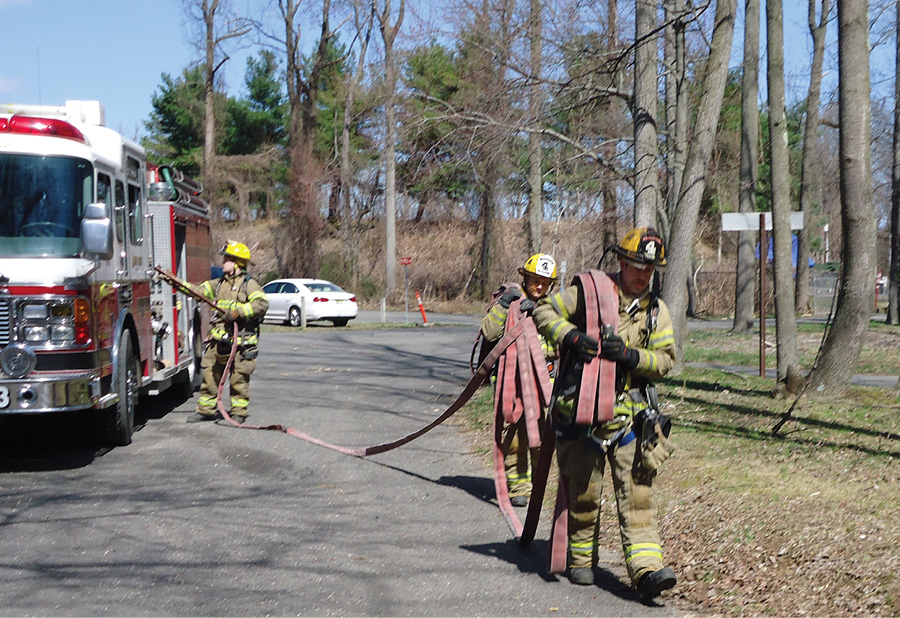
(4)

(5)

(6)
The Result
The goal of this evolution is to flake out the first two lengths of the attack hose in a serpentine arrangement with the nozzle and first two sets of couplings forward near the entry point. This configuration allows for an easy advance of the attack line once the hose is charged and bled. Photo 7 shows a proper, neatly flaked initial attack hoseline. Note that the couplings are forward toward the fire building.
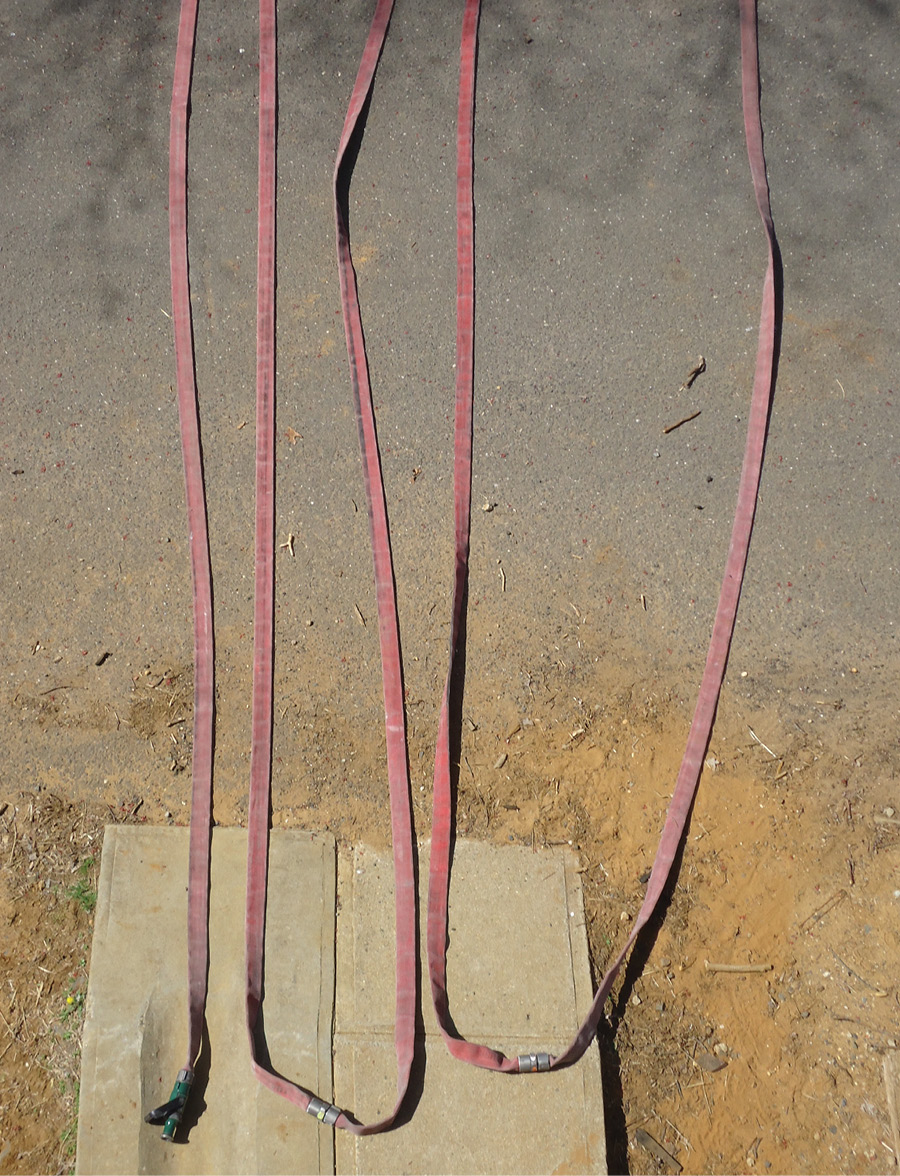
(7)
Assigning individual responsibilities to each of the members performing the hose flake reduces confusion and duplication of effort. This speeds the stretch and flake of the initial attack line, allowing for smooth advance and getting water on the fire quicker. A wise old fire chief once said, “The fire goes as the first line goes.” With that in mind, firefighters must spend time planning and practicing this routine operation so we can shine the next time we make the stretch.
JACK HUESTON is a 31-year veteran of the Middletown Township (NJ) Fire Department and captain of its Special Service Unit. He is a New Jersey-certified level 2 fire instructor with the Middletown Fire Academy and with the Monmouth County Fire Academy. Hueston is a retired police officer who served 26 years with the Middletown Police Department.

